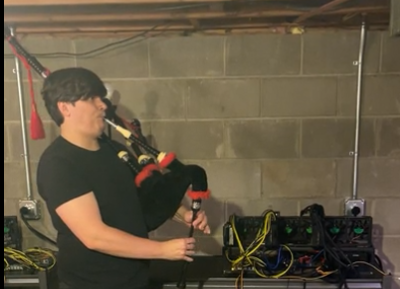What to do with mining rigs after the merge

As a former Ethereum miner, in addition to cursing the almighty Core Devs, you’re probably wondering what to do with mining rigs now that the merge beckons them to Valhalla. While the income from GPU mining was never truly passive (any Rig MD will tell you they’re always on-call), Ethereum rewards counted for 95% of the total income paid to miners from all GPU-mineable altcoins, leaving most mining rigs out of a job. We’ve seen the hashrate skyrocket and profits tank on alts and as a result, many miners have decided to shut down their erstwhile money-printing space heaters, as u/bagpiperjoe241 did, with unmatched flourish.
What to do with mining rigs…
For the best bang for your buck
If you’re looking to get the most profit given the current market reality, you should absolutely sell your mining rigs now. Time is of the essence as the prices for GPUs are dropping daily as more miners attempt to sell their hardware. The market is very volatile now, but only in one direction: down. This means that even if you want to ape back into mining at a later date, mining hardware will be plentiful as a result of the number of GPUs now sitting idle that will eventually make their way to the market with only limited non-mining demand from buyers.
Unlike ASICs, GPUs have significant use cases and residual value outside of crypto mining. While gamers are price-sensitive, are highly suspicious of crypto miners, and need only one GPU, they represent the largest demand for GPUs. That’s where we come in.
For a great cause
Folding proteins for science! Before GPU Mining, Folding@Home introduced many folks to a meaningful use case for idle GPU cycles, and like GPU mining, it is a competitive and fun hobby for a cause.
BOINC is another network for donating your GPU and CPU computer power to science. You can also earn Gridcoin for doing so. While not viable as a business model, this is a fun and productive hobby.
If you want to see a project included here, write me in our contact form or on Twitter @bitpro_kel and I’ll take a look.
For a project you believe in
Proof of work is such a novel and powerful concept, with such an enthusiastic community that is seems near certain that a worthwhile project will come along and revive the incredibly fun and engaging hobby/business model that is GPU mining. Although that project has yet to rear it’s fabulous mane profitably, there are many serious teams working on it. If you have a project you want to bet on, the better play is selling your hardware to buy & hold the token – cheaper potential upside vs. mining.
For heat
With fossil fuel prices on the rise, those living in wintry areas with access to cheap electricity, it may still make sense to mine at a loss just for the heat. In most places, this strategy likely belongs in the “for kicks” bucket, as it’s going to be more cost-effective to heat your living space with traditional, purpose-built infra.
For kicks
Although mining isn’t profitable now, there’s still entertainment to be had if you’re more of a hobbyist.
Launching in 2023, earn SETIcoin providing hashpower to process signal data received from the vast expanse of the universe. On second thought, your hardware will depreciate in the meantime, so, if finding E.T. is of interest, you are better off realizing the value of the majority of your hardware now, and keeping just “RTX Moulder” and “RX Scully” down in the basement office on the case.
What not to do with mining rigs
We frequently hear the following ideas proposed as alternatives to GPU cryptomining. These use cases tend to do best in a highly centralized compute environment, the opposite of what GPU rigs are optimized for. In these cases, there are infrastructure challenges and additional hardware investment required to make these ventures worthwhile that aren’t immediately apparent, so, DYOR, but maybe these next paragraphs will save you some time.
Artificial Intelligence and Machine Learning
Compute marketplaces like Vast.ai are popping up on the radar again, but there are a few prereqs to making this viable at-scale that make this an unattractive option for most miners interested in profitability. You need very low latency internet connections & more processing power & VRAM than your typical mining rig. Read more about the challenges of sticking the landing to AI here.
Rendering
While rendering is more attainable than renting compute for machine learning and AI, there are well-established competitors in this space to contend with. While generative art projects like Dall-e and Artflow.ai soak up compute power, in any of these use cases, a high-performance centralized data center with reliable uptime is the go-to solution. The flagship decentralized rendering project, Render Network, has some great developers working to make this a viable model, it is currently only paying about $20 per day (checked pre-merge) and not taking new miners at the moment. Decentralized rendering has a long way to go before it can compete.
